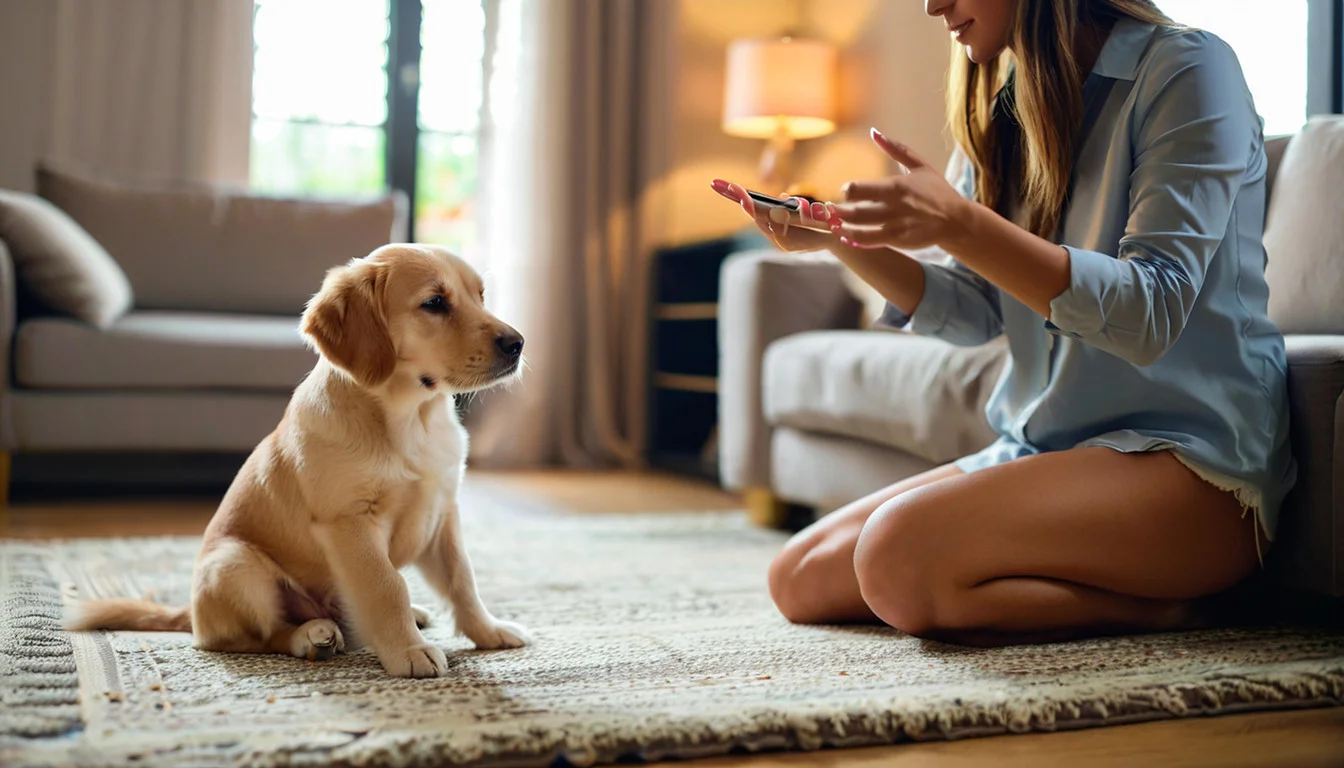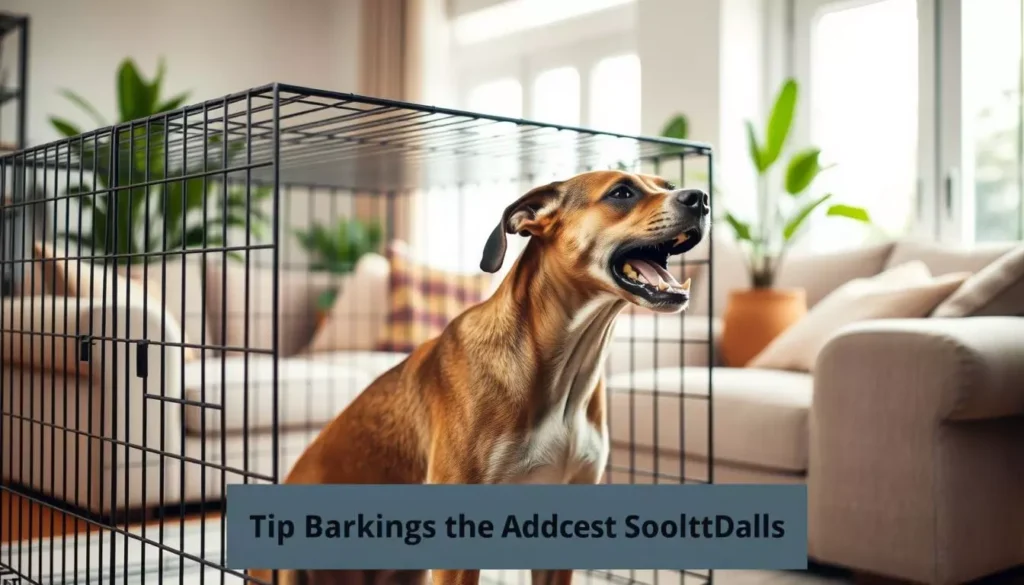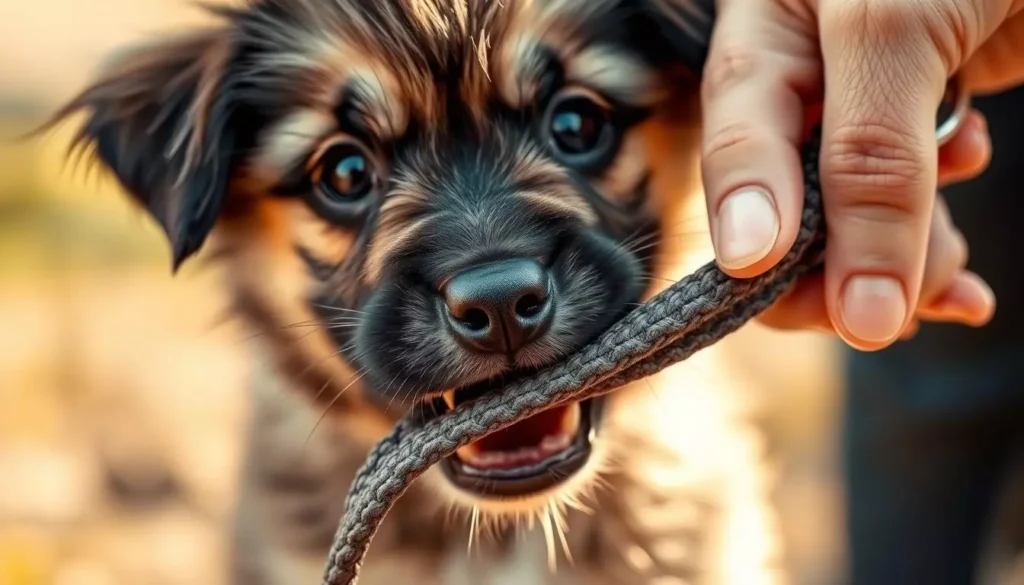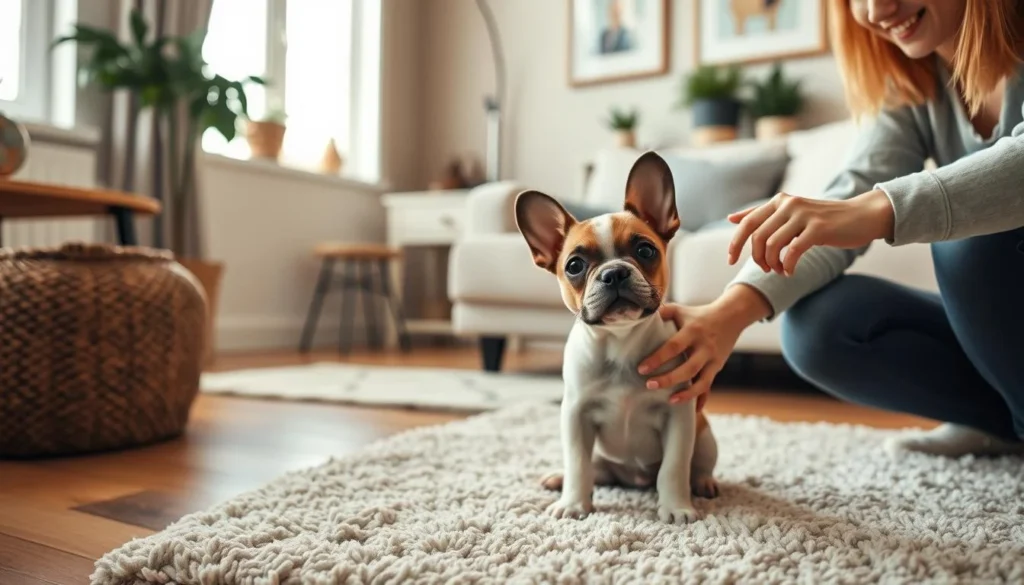I remember the first morning I brought a trembling terrier mix home. She was tiny and watched me closely. This taught me that puppies start learning right away, and it shapes their future.
So, when I think about when to start training a dog, I look back to that morning. The science says early exposure is key. Between 6 and 16 weeks, puppies soak up new experiences like a sponge. These weeks are crucial for learning and remembering.
Practically, most experts say to bring a puppy home at 7–8 weeks. I agree that the best time to start training is when they arrive. Positive reinforcement is the way to go because it's safe and fun. Training is a lifelong journey. With consistent effort, many puppies learn well by 5–6 months, building a strong foundation for the future.
Key Takeaways
- Puppies start learning immediately from their environment and people.
- The optimal age for dog training is largely within the 6–16 week socialization window.
- Bringing a puppy home at 7–8 weeks lets you begin practical training right away.
- Positive reinforcement is the recommended, science-backed approach.
- Training continues throughout life; expect steady progress with consistency.
Understanding when to start training a puppy: developmental windows and optimal age for dog training
I've seen many puppies grow up and learned that timing is key. Choosing the right age for training is all about matching the puppy's brain and body. Early habits shape future behavior, safety, and trust.
I start with social handling, name games, and gentle touch right after weaning. The decision on when to start training depends on the puppy's readiness and health. Short, frequent sessions are best because young pups can't focus for long.
Why early weeks matter
Puppies learn fast. Early positive experiences help avoid fear and make life easier. I introduce them to people, sounds, and textures calmly to build confidence.
Critical socialization period between 6 and 16 weeks
The 6–16 week period is crucial for social skills. Controlled play, varied surfaces, and gentle stranger introductions are key. Missing this window means more work later to overcome fears.
How developmental readiness affects learning and retention
Puppies around eight weeks can learn simple commands like sit and come. I keep sessions short and fun. Physical maturity, attention span, and vaccination status guide my teaching.
I always check with my vet before starting group classes or outdoor adventures. In the first weeks, I focus on safe socialization at home. This approach helps build a strong bond and lasting skills without risking health.
how old should a dog be to start training
I often get asked when to start training a dog. The answer is simple: start as soon as you bring the puppy home. Keep the lessons short and gentle. Early training helps establish good habits and routines.
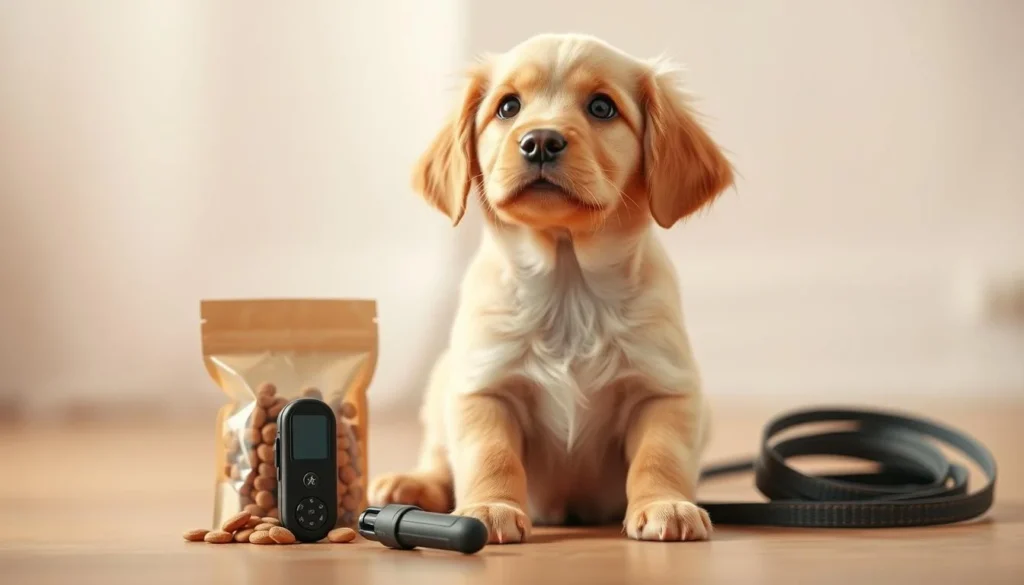
Bringing a puppy home at about 8 weeks and starting immediately
When a puppy is about eight weeks old, I focus on the basics. This includes teaching their name, potty habits, crate training, and getting them used to touch. These early days are crucial for learning simple commands.
I use short sessions and treats to keep them excited about learning. This makes the process fun and rewarding for both of us.
Benefits of starting at 7–8 weeks versus waiting
Puppies at seven to eight weeks are full of curiosity and ready to learn. Training them early helps with socialization and reduces fear-based behaviors. This makes house training and leash manners easier.
Starting early also means less need for later corrections. Small, consistent steps lead to predictable days for both puppies and owners. This speeds up progress and lowers stress.
Training older puppies and adult dogs: it’s never too late
I also work with adult rescues and older puppies who missed early training. They learn quickly with patience and positive rewards. The right time to start training can vary, depending on the dog's needs.
For older dogs, I create special catch-up plans. I use tools like clickers or verbal cues and practice skills in different settings. This shows that it's never too late to start training a dog, as long as you're consistent.
Starting specific skills: how old should a dog be to start potty training
I help new puppy owners start house training with simple goals. Many wonder when to start potty training. I share the typical age and easy routines for success.
Typical age range for potty training: 8 to 12 weeks
Puppies can learn bladder control around eight weeks. The best time for puppy training is between 8 to 12 weeks. I suggest starting at home as soon as the puppy settles.
Practical potty-training schedule and tips
Take the puppy out often. I follow a rhythm: after meals, naps, play, and when they wake up. Short, frequent trips are better than long gaps.
I use a leash-on-owner method. I take the pup outside on a leash and stand quietly for about five minutes. This helps the pup focus on the task.
Crate use speeds learning. Choose a crate that lets the puppy stand and turn. Make it a welcoming den and introduce it step by step. I use the crate to help puppies learn to hold their bladder overnight.
How long potty training can take and signs of progress
Expect steady improvement over weeks. Training can take from one week to a month for consistent progress. I look for longer gaps between accidents and the pup signaling at doors.
Clear signs of progress include intentional scratching or whining to be let out, and reliably eliminating outside. I reward each successful outdoor toileting with calm praise and a small treat to reinforce the habit.
| Item | Action | Expected Timeline |
|---|---|---|
| First outings | Carry out leash-on-owner, go to the same spot, wait 5 minutes | Immediate to 1 week for routine uptake |
| Crate introduction | Short, positive sessions with bedding and treats; gradual alone time | Several days to 2 weeks for comfort |
| Meal-to-potty schedule | Take out after meals, naps, play, wake-ups; keep consistent | 1–4 weeks to reduce accidents |
| Signaling & cues | Watch for circling, sniffing, scratching at door; pause activities to respond | 1–3 weeks to learn intentional signaling |
| Reliable outdoor elimination | Reinforce with praise; generalize to different outdoor spots after consistency | 2–8 weeks depending on puppy and consistency |
When to begin obedience training: how old should a dog be to start obedience training
Many people ask when the best time is to start training a dog. Puppies can start with simple training early on. Short, fun exercises help build their focus and trust.
I teach puppies as young as eight weeks to recognize their name, sit, and come. These basics are crucial for future learning. I use treats and kibble to reward them during meals.
Training sessions are short for young pups, lasting about five minutes. Older puppies can handle up to fifteen minutes. I repeat these sessions several times a day, ending on a positive note.
Being consistent is key. I always use the same cues and hand signals. I mix rewards like food, toys, and praise to keep each dog motivated. This method helps all dogs, regardless of breed or temperament, learn steadily.
Once they learn at home, I gradually add more challenges. I start in different rooms, then the yard, and eventually quiet public places. This helps them learn in real-world situations.
By five to six months, many puppies show reliable responses. If you're wondering when to start training, begin early but be realistic about their age. This balance is crucial for their success in training.
| Age Range | Typical Focus | Session Length | Expected Milestones |
|---|---|---|---|
| 6–8 weeks | Name, gentle handling, brief attention games | 2–5 minutes, multiple times daily | Reaction to name, short sit, interest in treats |
| 8–12 weeks | Sit, come, crate introduction, potty cues | 5–10 minutes, 3–5 sessions daily | Reliable short sits, initial recall at close range |
| 3–6 months | Duration, distance, leash manners, socialization | 10–15 minutes, 2–4 sessions daily | Improved recall, stay with short duration, basic leash walking |
| 6+ months | Generalization in public, longer stays, increased distractions | 15 minutes or more as attention allows | Consistent obedience in varied environments |
Age considerations for agility and sport: how old should a dog be to start agility training
I help owners find the right time to start agility training for their dogs. It depends on the dog's breed, size, and how it grows. I follow guidelines that suggest starting with gentle play and learning skills later.
Physical maturity vs. mental readiness: Puppies often show great interest and learn quickly. But, their bones and joints need time to grow. I advise waiting until a vet says it's safe to start.
Introductory pre-agility activities for puppies: Start with fun, easy games that help with balance and coordination. Short games, low ramps, and soft pole weaves are great. These activities are positive and follow the best age to start training advice.
When to add impact and high-jump elements: Always check with a vet and a good trainer before adding tough obstacles. For many dogs, this is between 12 to 18 months. Working with certified trainers and following age guidelines helps avoid injuries and builds skills.
I emphasize slow, steady progress and short training sessions. This keeps puppies excited and ready for agility training without rushing their growth.
Early skills: socialization, leash work, and crate training for suitable age for puppy training
I guide you through easy steps to know when to start training a puppy. We focus on safe, short sessions and positive experiences. This helps puppies learn with confidence.
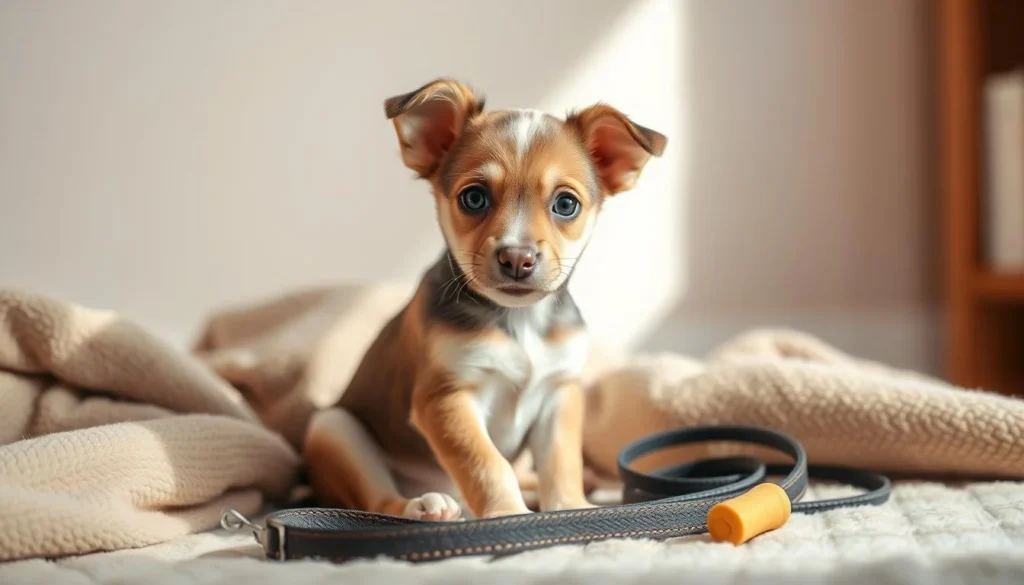
Socialization protocol while respecting vaccination schedules
Begin socialization after the puppy is weaned. Start with family and trusted friends. Then, introduce them to calm places with different people, surfaces, and sounds between 6 and 16 weeks.
Avoid dog parks until vaccinations are done. Look for low-risk places like puppy classes or supervised play with healthy dogs.
Leash and harness introduction steps at 8–10 weeks
Introduce a lightweight harness at 8–10 weeks. Let the puppy wear it indoors with treats and praise. Then, add the leash and practice short walks.
Play start/stop games to teach walking and sitting. Keep sessions short and end on a positive note.
Crate threshold training and creating a safe den
Put the crate in a central room. Use soft bedding and treats to encourage entry. Reward calm behavior and brief stays.
Slowly increase crate time while you're nearby. Treat the crate as a safe space, not punishment. This helps with potty training and separation anxiety.
Handling exposure
Regularly touch paws, ears, and mouth with treats. Simulate grooming and vet visits in short sessions. This teaches tolerance and makes vet visits easier.
- Begin socialization early but follow vaccination guidance.
- Start leash and harness indoors at 8–10 weeks with short, fun steps.
- Use crate threshold training to make the crate a safe den.
- Pair handling with rewards so vet visits feel routine.
Training methods that work: positive reinforcement and age-appropriate techniques
I think a gentle, reward-based approach is best for puppies. It uses clear cues, short sessions, and rewards to build trust and speed up learning. This method follows current dog training age recommendations and focuses on what each puppy finds motivating.
Why positive reinforcement is the scientifically backed method
Studies show positive reinforcement dog training reduces fear and leads to lasting behavior changes. I use praise and treats to reward good choices, avoiding corrections that stress them out. This method is great for young dogs because their brains learn quickly from rewards.
Reward types: kibble, high-value treats, toys, praise
I begin with the puppy’s regular kibble during meals to teach basic cues. For distractions or new places, I use high-value treats or a favorite toy. Many dogs love petting and enthusiastic praise, which helps as I start to use fewer food rewards over time.
Avoiding punishment-based tools that cause fear or anxiety
I never use shock, choke, or prong collars. These tools can cause fear and harm trust. Instead, I use management and redirection when a pup makes mistakes. This approach protects a dog’s emotional health while teaching them skills, following dog training age recommendations.
Keep sessions short, five to fifteen minutes, and end on a positive note. As reliability grows, I increase difficulty before I reduce treats, substituting praise or play to keep responses strong.
Designing a puppy training timeline: best time to begin dog training and a month-by-month roadmap
I've created a detailed puppy training timeline, month by month. It shows what to teach and when. This plan answers when to start training and keeps lessons short and fun.
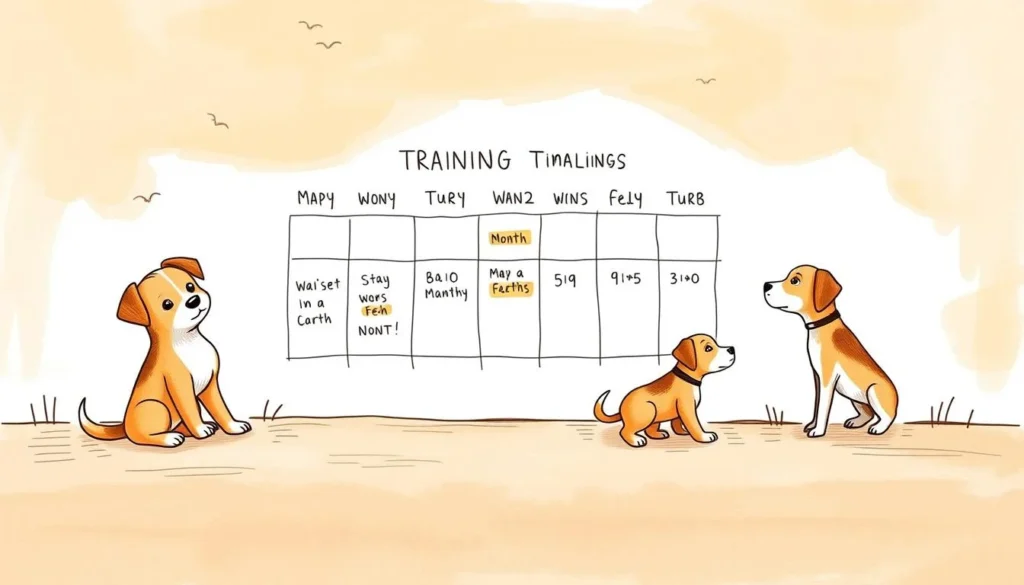
I start with the earliest weeks and build up to more complex skills. Each stage has one or two goals to keep your puppy interested.
8–10 weeks:
- Teach name recognition, sit and come using food at mealtimes.
- Begin a potty routine with frequent outdoor trips and praise for success.
- Introduce crate threshold work so the den feels safe and calm.
- Allow limited socialization with household members and quiet exposures.
10–16 weeks:
- Expand basic obedience to include place, down and a simple heel.
- Introduce leash and harness training in short, positive bursts.
- Continue graded socialization to new people, surfaces and sounds once your vet clears outdoor time.
- Practice impulse control games like waiting for food and door thresholds.
4–6 months and beyond:
- Add stay, leave-it and longer durations with moderate distances.
- Increase heel work and longer, purposeful walks.
- Phase out constant food rewards while adding distractions to tests.
- Manage adolescence by keeping structure, short daily sessions and predictable rules.
Tracking progress with a simple log is recommended. It shows gains in duration, distance, and distractions. This helps determine the best time to begin dog training steps for each puppy.
Use a long line to practice recall safely and increase challenges slowly. This keeps the training timeline realistic and flexible. It answers how old should a dog be to start training for each skill set.
Practical tips for success: consistency, short sessions, and training in different environments
I make training simple and easy every day. I focus on short, frequent sessions. I also keep a steady routine around meals and potty breaks. As the puppy grows, I move practice into more places.
Keeping sessions short: 5–15 minutes based on age
I match session length to age. Very young puppies do best with about five minutes per session. Older puppies can handle up to fifteen minutes. I repeat short sessions many times a day rather than one long drill.
Using daily routines and mealtimes as training opportunities
I use meal-time training to build focus. Before each meal, I ask for a simple cue, such as sit or wait, then release for food. Treat pouches make this easy when I’m out. This ties training to predictable daily events and supports consistent training for puppies.
Gradual generalization: practicing skills in parks, sidewalks, and noisy places after vaccinations
I start practicing outdoors in low-risk spots once vaccinations allow. I pick quiet sidewalks first, then try busier parks and storefronts. I increase distractions slowly so the puppy learns cues across settings without getting overwhelmed.
| Focus Area | Age Range | Session Length | Practical Action |
|---|---|---|---|
| Initial attention | 7–10 weeks | 3–5 minutes | Short name games, soft praise, meal-time cue before food |
| Basic obedience | 10–16 weeks | 5–10 minutes | Introduce sit, come, leash steps; repeat throughout the day |
| Distraction proofing | 4–6 months | 10–15 minutes | Practice in parks and sidewalks, add mild distractions, use high-value rewards |
| Adolescence management | 6–12 months | 10–15 minutes | Maintain routines, reinforce consistent training for puppies, increase distance and duration |
I keep the same cue words and hand signals every time. If the puppy needs to go out, I stop what I’m doing and help right away. This predictability shows that starting early and staying steady yields the best results.
Choosing classes or professional help: dog training age recommendations and what to expect
I help owners navigate the many options for puppy training. It's important to know the right age to start. I explain typical ages for classes, what they cover, and how to find the right trainer.
Puppy socialization classes are recommended for many litters at about eight weeks with vet approval. Formal group lessons usually start later, after core vaccinations, around 12–16 weeks. I say early play-based socialization and later structured lessons work well together.
I look for practical benefits when suggesting classes. Professional settings offer organized socialization, steady progress checks, and timely feedback. These features help skills develop faster than solo practice in many cases.
I advise owners to carefully evaluate trainers. Choose those who use positive reinforcement, require vaccine records, set measurable goals, and provide clear practice plans. Avoid trainers who use punishment or make vague promises.
I explain common service formats to match needs to availability. Trainers offer group classes, private lessons, day school, or board-and-train packages. I help owners decide based on their schedule and the dog's temperament.
| Program Type | Typical Start Age | Key Benefits | Who it suits |
|---|---|---|---|
| Puppy socialization class | About 8+ weeks with vet OK | Safe play, early social skills, supervised exposure | First-time owners, litters needing social boosts |
| Formal group training | 12–16 weeks after vaccines | Structured curriculum, peer distractions, trainer feedback | Owners seeking consistent progress and community |
| Private lessons | Any age | Individualized plans, focused problem solving | Puppies with special needs or owners with tight schedules |
| Day school / board-and-train | Varies by program; often after basic vaccines | Intensive immersion, accelerated results, built routines | Busy owners or dogs needing behavior reset |
I remind owners that local rules and vet guidance are key. If you're unsure about dog training age recommendations or choosing a puppy training class, I'm here to help. I'll guide you through the options and what to expect, so you make an informed choice.
Conclusion
I suggest starting training as soon as you bring a puppy home, usually around 7–8 weeks. These early weeks are perfect for socialization, learning their name, and basic training. It's also a good time for short obedience lessons.
These early steps are crucial for a dog's lifelong learning. They show that the best time to start training is early. Just make sure to do it safely and when they're fully vaccinated.
My main tip is to use positive reinforcement. Keep training sessions short and regular. Practice in different, safe places once they're vaccinated.
Remember, every puppy learns at their own speed. Focus on steady progress, not perfection. Be patient and enjoy the journey.
For the next steps, sign up for puppy socialization classes around 8+ weeks. Then, consider formal classes at 12–16 weeks. Always check with your vet and a good trainer for specific advice.
Training a dog is a lifelong journey. Start early, stay consistent, and enjoy watching your dog grow into a confident, well-behaved friend.

